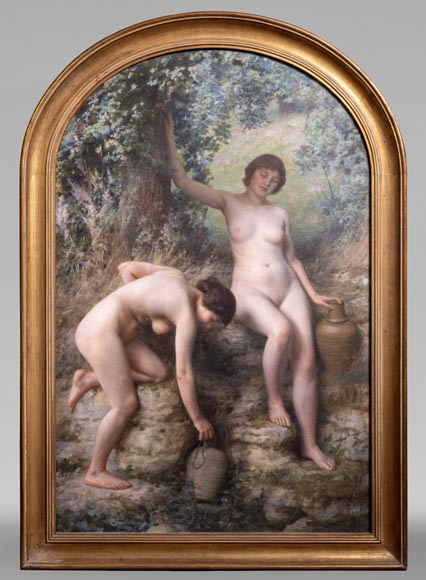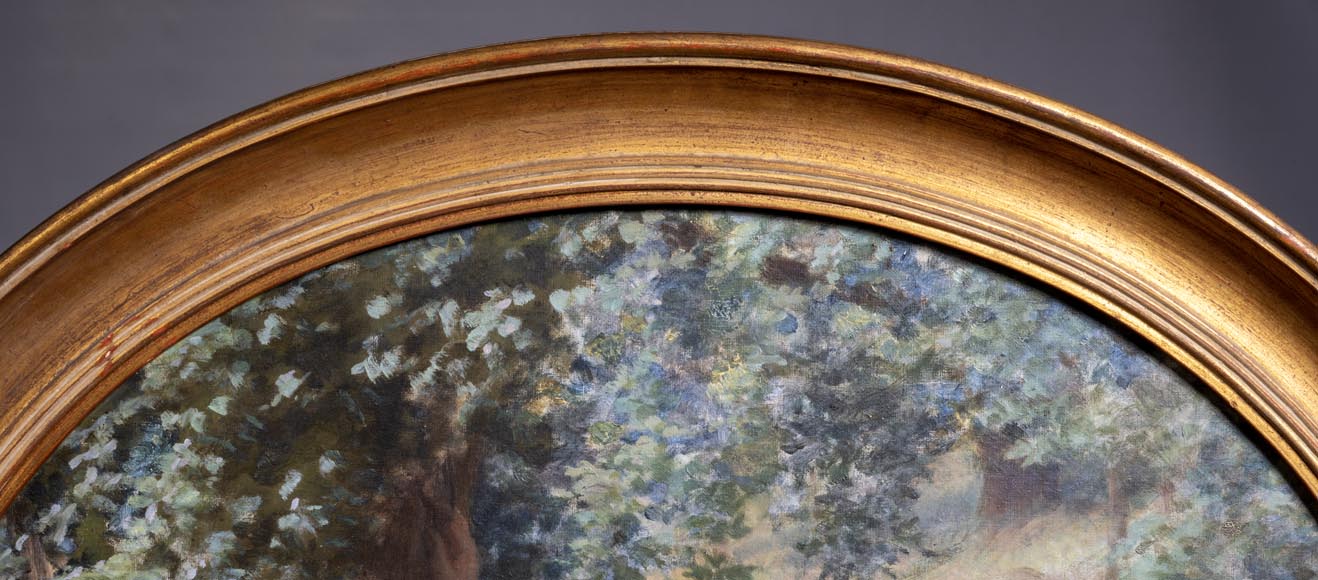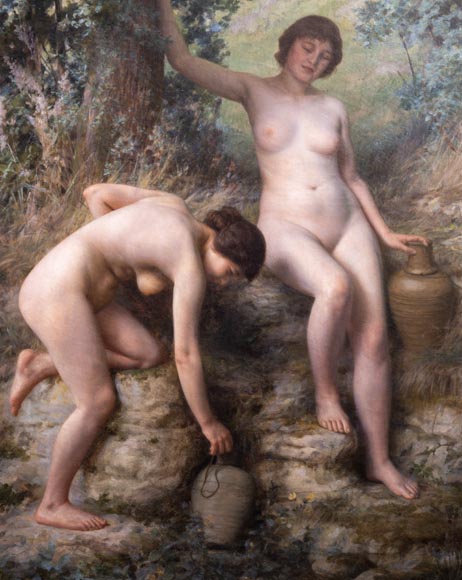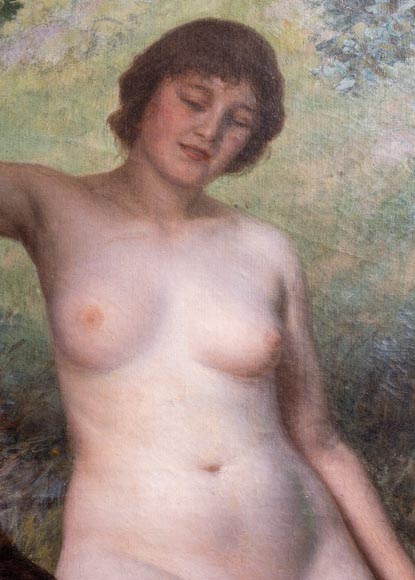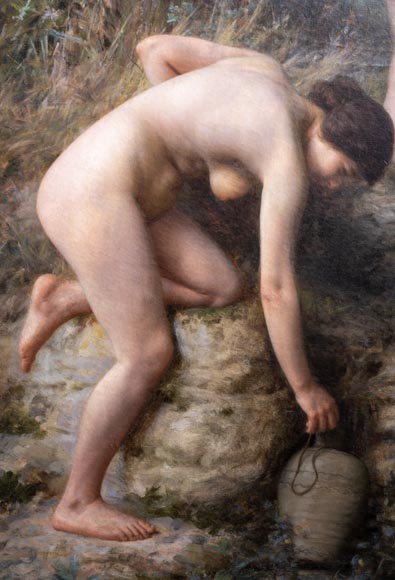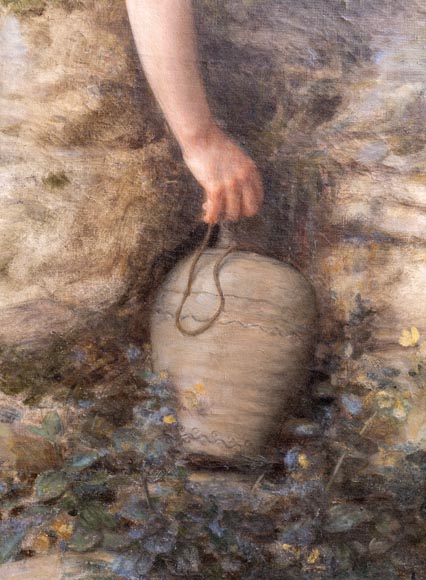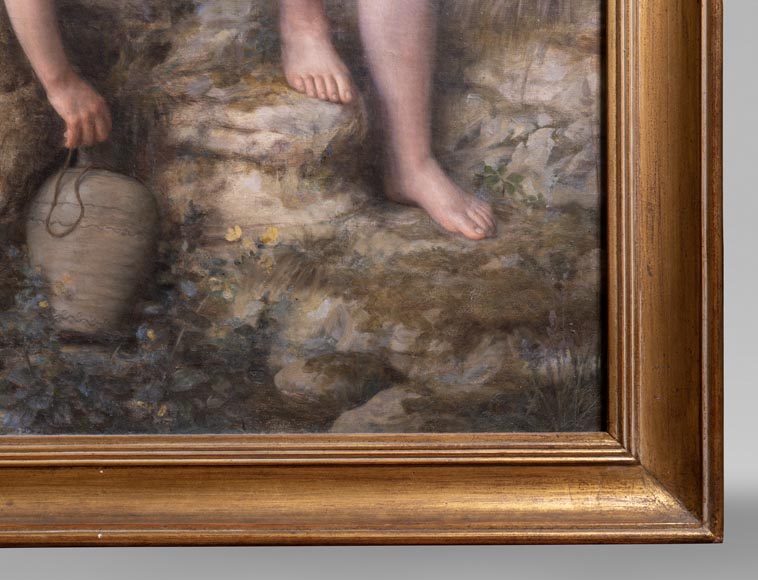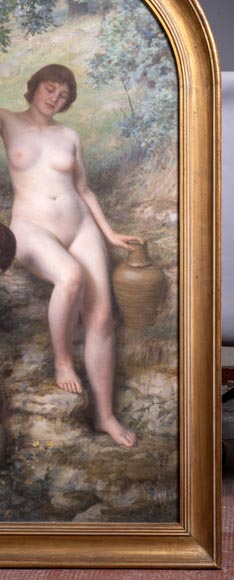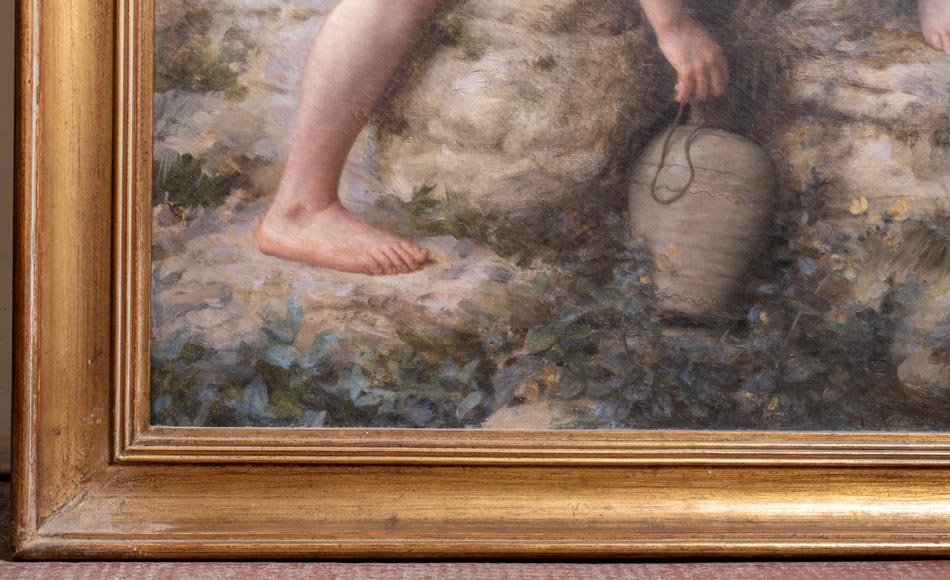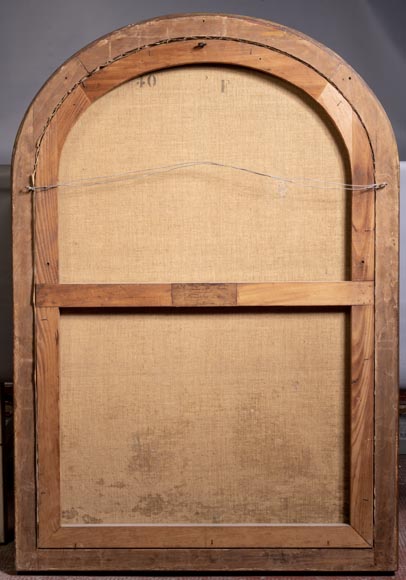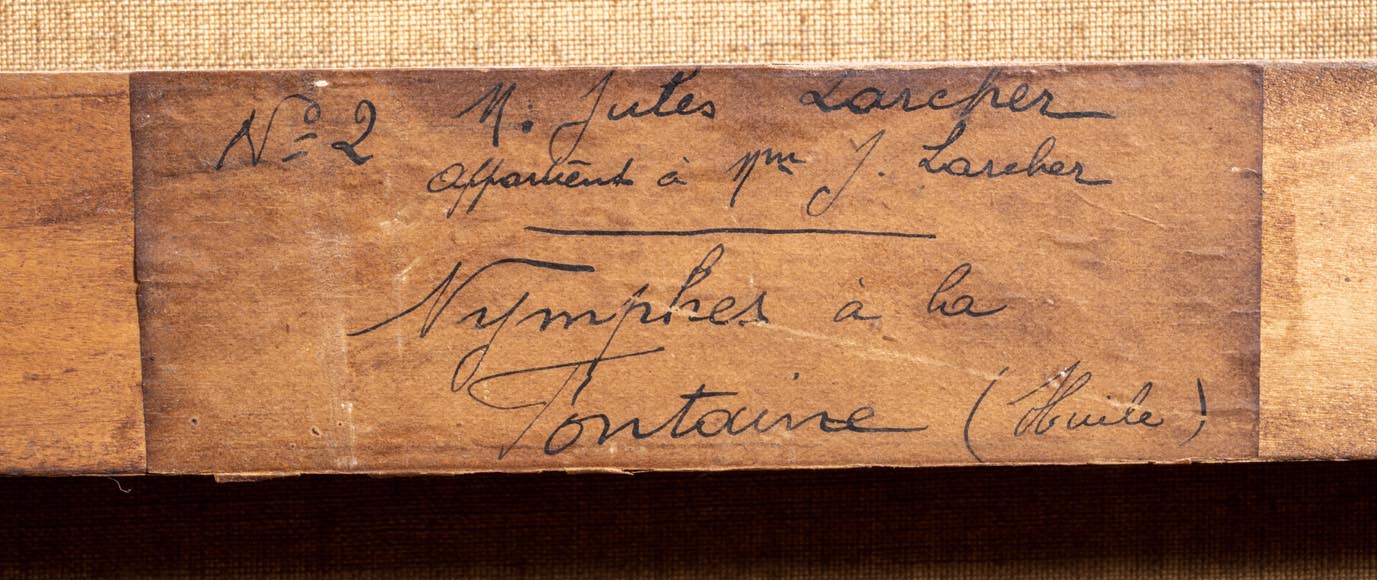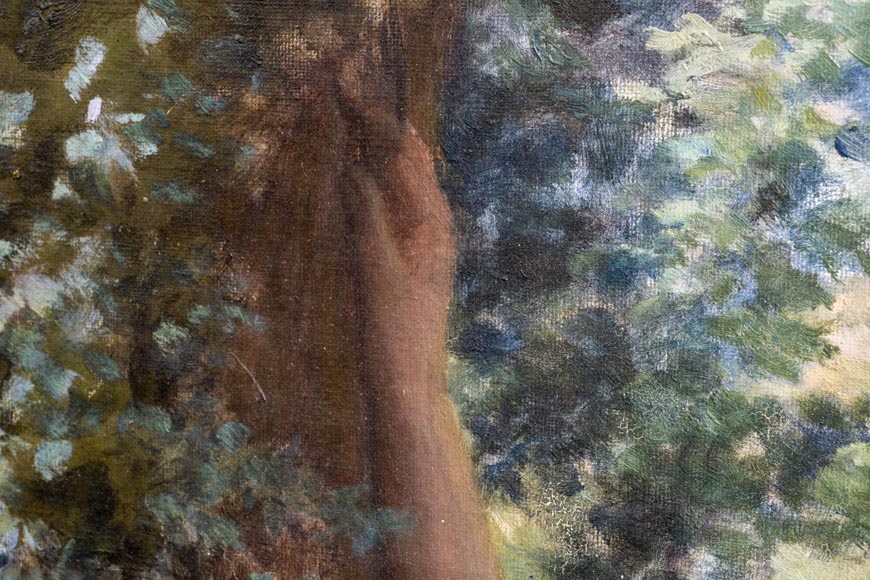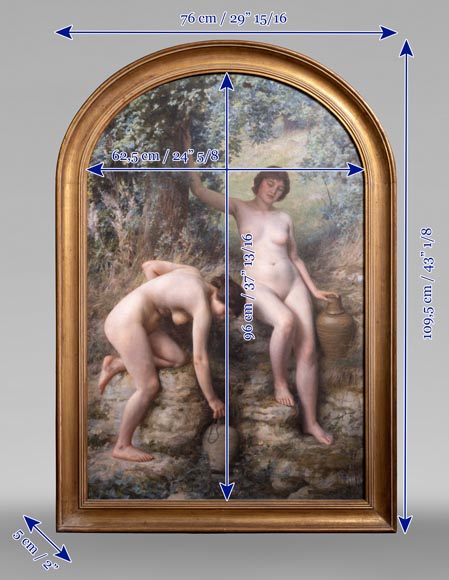Style Other / Ref.13161
Jules LARCHER - Nymphs at the fountain, oil on canvas
Dimensions:
Width: 30'' ¼ 77cm
Height: 43'' ¼ 110cm
Depth: 2'' 5cm
Origin:
19th century
Status:
Good condition
This painting, whose upper side is curved, shows two nude nymphs in a landscape. The first one is busy filling a vase at the fountain; she is bent over to hold the urn under the trickle of water and leans, with her left leg and arm bent over the rocks bordering the spring. The second, seated on the ground in a languid posture that emphasises her nakedness, leans against the tree behind her and casually places her left hand on her own vase. Her lips are stretched into a slight smile that reveals her teeth and she keeps her eyes downcast. The pale skin is bathed in a soft light, standing out against the darker background, the deep green foliage forming a barrel vault above the nymphs.
Nymphs are female divinities linked to the world of nature, particularly with the ones of forests and water. They are also linked to the erotic imagination, as seductive female figures. However, because they belong to the mythology, their representation is often a pretext for depicting female nudes. Here, the characters adopt two different positions, like in the exercise of the "academy" (the representation of the naked body). The female figures are idealised by the artist, who represents a canon of beauty rather than individual features and forms. The summer landscape itself is a setting invented to create a green environment around the characters.
Jules Larcher (1849-1920) was born in Lorraine. After learning how to draw at the Nancy municipal drawing school, he went to Paris. There, he studied painting with Léon Bonnat (1833-1922). He exhibited regularly at the Salon, the major Parisian painting exhibition of the 19th century. His most famous work is the painting Daphnis and Chloé (1849, Nancy, Musée des Beaux-arts). He exhibited it at the Salon in 1883, and it was acquired by the State for the museum where it is still kept. Its iconography and style are close to his Nymphs’: two naked young people are set in a landscape of undergrowth. Chloe’s position is similar to that of the nymph filling her vase at the fountain. As with the nymphs, the light skin tones stand out against the shadow of the wood. In 1886, Larcher was appointed curator of the Musée de Peinture et de Sculpture and director of the École des Beaux-Arts de Nancy, to which he gave a new development. In 1894, he married Maria Roy, a flower painter who had been his pupil in Nancy. As indicated by a label sticked to the back of the frame, which also gives the artist's name and the title of the work ("M. Jules Larcher / appartient à Mme J. Larcher / Nymphes à la / Fontaine (Huile)"), the painting would have belonged to the artist's wife.
Informations
Price: on request
Recommended for you :
Dimensions:
Width: 495
Height: 351
Dimensions:
Width: 420
Height: 253
Depth: 3
Dimensions:
Width: 65
Height: 195
Depth: 3
Dimensions:
Width: 162
Height: 295
Depth: 14
Dimensions:
Width: 86
Height: 108
Dimensions:
Width: 122
Height: 240
Dimensions:
Width: 68
Height: 325
Dimensions:
Width: 267
Height: 210
Depth: 16
Inner width: 228
Inner height: 166
Dimensions:
Height: 33
Diameter: 55
Dimensions:
Height: 5
Diameter: 33
Dimensions:
Height: 31
Diameter: 51



